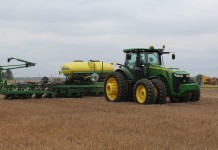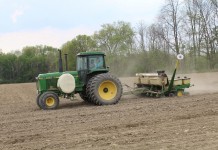WASHINGTON — While financial and risk-management decisions always have been challenging aspects of farm and ranch work, extreme volatility in commodity markets in recent months has made these jobs even more difficult for farmers, even as prices have soared.
During a Capitol Hill hearing today, American Farm Bureau Federation President Bob Stallman told lawmakers that farmers are contending with unusual degrees of financial risk and exposure as futures markets have become increasingly volatile.
Misconception
While sky-high futures contract prices cause many Americans to believe farmers are bringing home the proverbial bacon, the reality is few farmers benefit directly from the contracts advertised by commodity exchanges.
Stallman cautioned because of the disparity between futures contracts and cash, or spot, prices, farmers could find themselves exposed to more risk as time goes on.
He also said the role of speculative and commodity-index-related trading in agricultural futures markets, while growing for some time, has reached historic levels and contributes to market uncertainty.
Local cash markets traditionally look to futures markets for “price discovery.”
Stallman said one role of the Commodity Futures Trading Commission is to ensure that markets offering commodity futures and options help farmers manage price risks and assist in the discovery process for cash prices.
“The futures market mechanism is, at least, bent at this point in time, and the fact that several major grain and oilseed marketers are only offering firm crop-price bids 60 days into the future is a rather ominous sign the breaking point might not be far away,” Stallman said.
Challenges
Stallman said farmers right now are challenged with developing and implementing risk management programs for their crops — a problem compounded by the fact that as prices for supplies such as seed, fertilizer and fuel rise, producers feel pressure to lock in what they will pay for these inputs months ahead of knowing how their crops will fare and what prices they will receive for them at harvest.
“In some instances, farmers are even being asked to prepay for inputs they will not utilize until the next crop year,” Stallman said.
“This results in the uncomfortable position of producers locking in future input costs without similar opportunities in future crop prices.”












